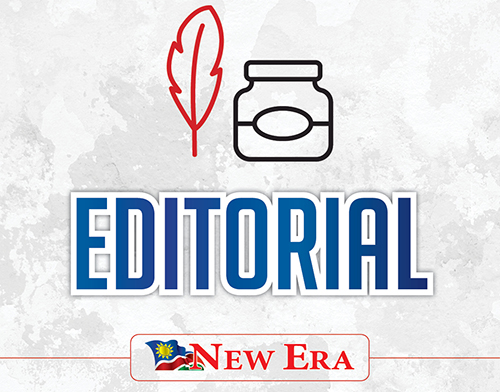The Bank of Namibia’s Monetary Policy Committee this week again increased the repo rate, this time by 25 basis points.
This puts Namibian workers under tremendous pressure as they deal with stagnant salaries and increasing transport and food prices as well as an escalation of borrowing costs.
Judging from the reaction to New Era’s repo rate articles earlier this week that detailed the dire consequences of higher interest rates, ordinary Namibians are begging for some form of reprieve. This is because the average person has not had any financial relief since the advent of the Covid-19 pandemic that obliterated the normal way of doing business.
BoN increased the repo rate by a cumulative 300 basis points from 3.75% to 6.75% during 2022. The central bank increases the repo rate to slow down the annual inflation rate that averaged 7.1% in the first three months of 2023 compared to 4.5% during the corresponding period in 2022. Since February this year, the central bank has increased the repo rate by 50 bps from 6.75% to 7.25%.
The average home loan rate in 2021 was 8.5%, compared to 11.75% currently. For a house valued at N$1.2 million, the monthly repayments have increased by more than N$2 590 per month during the last two years.
While the central bank maintains that taming inflation is part of its mandate, the average consumer feels BoN has failed miserably.
The esoteric, theoretical approach to stemming inflation, compared to real life challenges, needs to be relooked.
It is evident that this approach has done nothing for the average Namibian besides deflating the already empty pockets of struggling consumers while inflating the already bulging pockets of the commercial banks.
By raising interest rates, the central bank hopes to slow down the economy by making it more expensive for consumers and businesses to borrow money. However, some economic analysts who have departed from the conventional train of thought argue that the usage of interest rate hikes as a tool to solve the inflation problem could trigger a recession.
Their reasoning is that a rise in interest rates makes it more expensive for companies to expand, which in turn could lead to a reduction in investments, ultimately hurting employment. Therefore, they contend, raising rates in an already weak credit environment would have little impact on the domestic economy.
Those well versed in economic matters further claim it is obvious the current high inflation is being caused by supply issues. But the central bank remains adamant that emptying the average Namibian’s pockets is the only way to address inflation. This approach, analysts and even Agribank, debate, is detrimental to the economy as it reduces the money circulation in the domestic economy and therefore does nothing to stimulate economic activities. This in turn results in diminished investment and accelerates unemployment.
Also, the central bank has implemented a N$500 million post-Covid-19-relief programme for SMEs, which works in conjunction with various private sector initiatives. This year’s national budget also allocated N$6.5 billion to the various social safety nets for the vulnerable.
But where is the much-needed relief for the working poor who continue to be squeezed harder every time the interest rate increases due to the simple fact that many are over indebted?
The finance ministry announced during the national budget speech, which could be considered an increase in the tax threshold, a de facto tax relief measure for workers. Unfortunately, this will only come into effect next year.
But the question that remains to be answered is; where is the respite for Namibian workers who desperately need it now more than ever?


